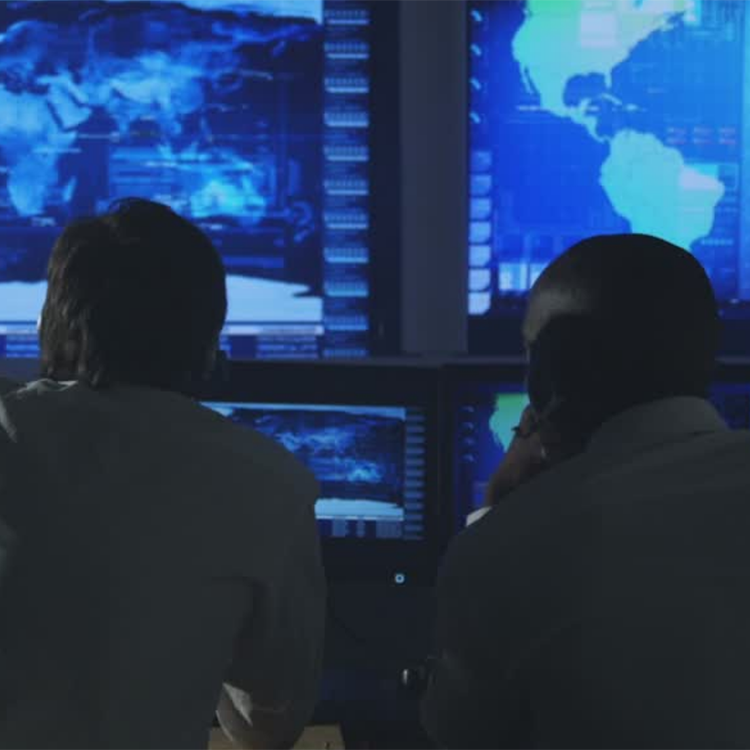Solutions for nearly every simulation requirement.
For over 30 years, FLAMES® has been used to develop custom simulations used by aerospace, defense, and transportation organizations around the world. These simulations have addressed almost every type of constructive simulation requirement imaginable.
Below are just a few of the ways that FLAMES-based simulations have solved real-world requirements:
FLAMES-based simulations have been particularly successful in supporting command, control, communications, and intelligence (C4I) system operator training. Read more about specific projects here.
Features of FLAMES-based C4I Training Simulations
- Support for air, land, and sea operations
- Support for air-to-ground, surface-to-air, and air-to-air missions
- Support for very large scenarios (over 1,000 players) on a single computer
- Import of ATO (Air Tasking Orders)/ACOs (Air Control Orders)
- Automated scenario generation
- Automated scenario execution
- Intelligent human behavior modeling
- Detailed platform and engagement modeling
- Detailed modeling of C4I systems and communications networks
- Direct interfaces to real-world C4I systems
- Message generation and reception in military formats
- Intuitive and easy-to-use graphical interface
- After Action Review with 2D and 3D visualization
Benefits of FLAMES-based C4I Training Simulations
- Allows realistic operator training
- Low-cost and adaptable
- Can be embedded and deployed with operational C4I systems
- Minimal hardware required
- Supports on-demand, in-garrison and in-the-field training
- Only one operator required
- Few or no role-players required

FLAMES’ ability to support models of almost any type of system allows FLAMES-based simulations to be tailored quickly and inexpensively for most performance and effectiveness analysis tasks. FLAMES-based simulations can support high-resolution, sub-millisecond, time-step simulation; highly aggregated, multi-day analysis; multi-variable parametric trade studies; and multiple-run, Monte Carlo-type analysis. The ease with which large scenarios can be developed, managed, executed, analyzed, and visualized in 2D and 3D greatly simplifies the analyst’s job and greatly reduces the time required to complete a task.

There are many parts of the test and evaluation process that can benefit from the features and capabilities of FLAMES-based simulations. Complete test scenarios can be simulated in advance to give planners and decision-makers greater insight into the test. The ability of FLAMES-based simulations to support direct interfaces with real-world systems (including military C4I, surveillance, and weapon systems) allows those systems to be rigorously tested in a controlled and repeatable manner. FLAMES-based simulations can also be integrated with live test range systems to augment the capabilities of the range.

FLAMES-based simulations allow any simulated entity to be under the interactive control of human operators. In addition, these simulations can also interact with many types of virtual simulators and real-world command, control, communications, intelligence, and surveillance systems. These features, coupled with the ability to simulate almost any type and size of scenario, make FLAMES-based simulations ideal for generating the synthetic environment for nearly any type of training exercise. Existing real-world systems or virtual simulators can be connected to these simulations to allow trainees to experience an almost unlimited number of situations. Multiple, geographically dispersed systems and simulators can be connected simultaneously to train operators located all over the world.

A step beyond using simulation for training purposes is using simulation for planning and rehearsing actual missions. With FLAMES-based simulations, this step is small and straightforward. The relatively modest level of effort required to add models of different types of systems allows a FLAMES-based mission planning system to be very responsive to the requirements of ever-changing situations. The rapid generation of scenarios and the automatic import of many types of scenario data allow fully interactive rehearsals of missions to be conducted within minutes of the time they are planned. The ability to realistically rehearse a mission prior to its execution can have a dramatic impact on the success of the mission, and FLAMES-based simulations help make such rehearsals possible.

Military commanders rely on the readiness of their troops to be successful in the conduct of warfare. FLAMES-based simulations can allow high-level commanders to prepare for and participate in practical, realistic wartime scenarios. Simulation participants can be immersed in virtual battlefield situations where they can explore options, learn techniques, and conduct analysis in order to enhance their decision-making and situational awareness capabilities. All land, air, and sea operations can be incorporated according to the user’s specific requirements. Read more about specific projects here.

